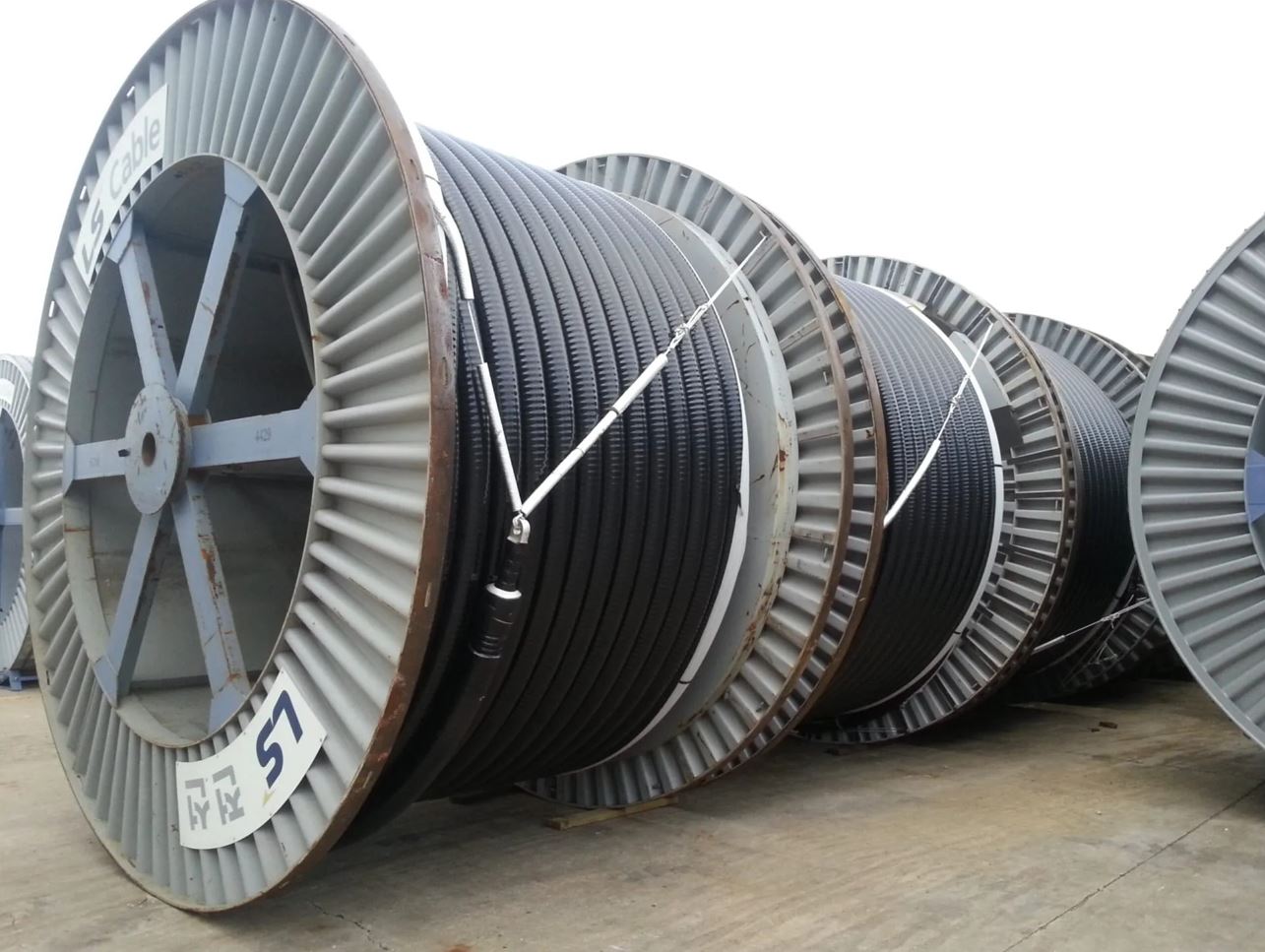The primary objective of value engineering is to provide long-term durability and reliability while keeping costs as low as possible. A great way to reduce the levelized cost of energy in industrial solar design and commercial solar design is to strategically replace expensive copper conductors with aluminum conductors, which are much more economical.
Many solar project developers are now taking advantage of this cost savings opportunity. Although aluminum conductors cannot completely replace copper ones, they are more advantageous for particular types of circuits in photovoltaic power plants. These affordable and reliable options work just as well as copper if specified and installed correctly.
Analyzing the costs of aluminum vs. copper conductors
According to Hartford Global Specialty Insights, copper hit a high price of more than $10,000 per metric ton in May 2021—a notable jump from the previous four-year average of $6,500. The price has decreased slightly since then and currently hovers at around $9,200 per metric ton. Industry experts attribute these astronomical prices to copper’s utility in electric vehicles (as well as their charging stations and transmission lines). The demand for this resource is also increasingly linked to China’s growth and global electric vehicle uptake in general.
Significant cost savings can be achieved by utilizing aluminum conductors on utility solar design and solar farm design projects. When it comes to electric conductivity, aluminum outstrips copper—and at a fraction of the price.
Copper is a more effective conductor than aluminum on a volumetric basis, of course; aluminum only has 62% of the electrical conductivity of copper per unit of volume. This means that for a given ampere capacity, an aluminum conductor will have to be larger than its copper counterpart.
But despite the need to initially invest in larger conductors and conduits, aluminum saves money in the long run. Its cost advantage becomes more significant at larger wire gauges and higher current levels. Let us take a closer look at just how large the price difference is.
A superficial glance at the NEC’s ampacity rating tables and the prices per foot for copper and aluminum shows values that do not follow a linear or proportional relationship. This makes it hard to understand the practical cost difference. However, when all this information is combined into a single value of $ per Amp, the cost savings become clear.

Key trends:
- 1. With a larger conductor size, the cost of copper rises rapidly. In contrast, aluminum prices stay relatively flat. This means that the cost savings from using aluminum increase significantly with larger wire sizes.
- 2. Copper costs twice as much as aluminum at lower conductor sizes. But at the larger sizes used in commercial, industrial, and utility-scale solar design projects, copper could cost as much as five times more than aluminum.
What happens when we factor in the price of materials and labor? It is true that aluminum often requires the use of a larger conduit. It also takes a little more time to pull the larger wires and carefully terminate them. Both of these can increase overall costs. But in the long term, Al conductors save so much money that these added costs become immaterial.
The table below contains the values from the graph above. The ampacity values are sourced from Table 310.15(B)(16) in the 2017 NEC, and the conductor prices come from Southwire’s 2018 price sheet for THWN wire. The cost per 1000’ length of wire was calculated using simple arithmetic.
| Conductor Size | Copper | Aluminum | ||||
| Ampacity | $/kt | $/A per 1,000′ | Ampacity | $/kt | $/A per 1,000′ | |
| 12 | 25 | $198.06 | $7.92 | |||
| 10 | 35 | $302.91 | $8.65 | |||
| 8 | 50 | $495.78 | $9.92 | |||
| 6 | 65 | $762.77 | $11.73 | 50 | $202.07 | $4.04 |
| 4 | 85 | $1,129.27 | $13.29 | 65 | $249.62 | $3.84 |
| 3 | 100 | $1,399.64 | $14.00 | |||
| 2 | 115 | $1,751.94 | $15.23 | 90 | $338.23 | $3.76 |
| 1 | 130 | $2,241.06 | $17.24 | 100 | $494.91 | $4.95 |
| 1/0 | 150 | $2,696.26 | $17.98 | 120 | $555.82 | $4.63 |
| 2/0 | 175 | $3,379.85 | $19.31 | 135 | $656.88 | $4.87 |
| 3/0 | 200 | $4,317.27 | $21.59 | 155 | $815.54 | $5.26 |
| 4/0 | 230 | $5,324.48 | $23.15 | 180 | $906.49 | $5.04 |
| 250 | 255 | $6,303.87 | $24.72 | 205 | $1,106.59 | $5.40 |
| 300 | 285 | $7,428.95 | $26.07 | 230 | $1,529.01 | $6.65 |
| 350 | 310 | $8,698.75 | $28.06 | 250 | $1,554.28 | $6.22 |
| 400 | 335 | $9,895.11 | $29.54 | 270 | $1,817.03 | $6.73 |
| 500 | 380 | $12,288.49 | $32.34 | 310 | $2,003.99 | $6.46 |
| 600 | 420 | $15,776.18 | $37.56 | 340 | $2,539.60 | $7.47 |
Important: Even though the table and graph above show that aluminum conductors can be used for lower-gauge wires, it is not recommended. Aluminum is not as ductile as copper, so smaller gauge wires are too easy to accidentally bend at sharp angles. This damages the threads and causes failures.
Dispelling some myths about aluminum conductors
You may be wondering: Why is aluminum used not more often as an electrical conductor if it is so cost-effective? Let us clarify this and other common misconceptions by discussing three key facts about aluminum conductors.
Fact #1: Aluminum is widely used as a conductor material.
There is a misconception that aluminum is not a popular conductor, but it is actually used extensively in electrical power systems.
- The National Electrical Code has required the use of aluminum as a conductor material since 1901.
- The power grid that provides electricity from generation facilities to homes and businesses is primarily composed of aluminum conductors.
- Electrical equipment manufacturers also rely on aluminum for everything, from panelboard busbars to transformer windings.
Fact #2: Aluminum conductors are just as safe and reliable as copper conductors.
The use of aluminum branch circuits was associated with poor in-field electrical performance in the late 1960s and early 1970s. However, investigators later determined that incompatible materials and installation errors were mostly to blame.
- Early aluminum conductors were also made with a utility-grade aluminum alloy, which wasn’t the best option for building cables. However, once this was discovered to be an issue, industry stakeholders came together and created new product safety standards for aluminum building wire.
- Modern aluminum building wire made after 1972 uses high-quality aluminum alloys, which are just as safe and reliable as copper conductors. Terminal compatibility issues were also addressed by the product safety standards developed during this period.
Fact #3: Aluminum conductors are just as durable as copper.
Aluminum has a lower tensile strength for the same cross-sectional area. It also requires a greater cross-section than copper to carry the same amount of current. But all factors considered, an aluminum conductor that is the proper size is just as strong and long-lasting as a copper conductor of equivalent amperage. Furthermore, aluminum conductors are more flexible than their copper counterparts.
Aluminum conductors: The key to value engineering in commercial and industrial solar design
With the decrease in the cost of PV (photovoltaic) modules, balance-of-system components including conductors are making up a bigger portion of the total cost of commercial and industrial solar designs. It is therefore important to focus value engineering efforts in this area.
Value is the ratio of function to cost. Value therefore increases by boosting function or lowering costs. Achieving value engineering in the solar industry may sound straightforward, but it is easier said than done.
Thankfully, the experts at SolarDesignExpert provide industrial solar design, commercial solar design, solar farm design, and utility-scale solar design solutions that improve the function of the project and reduce costs. Contact us today for more information.

